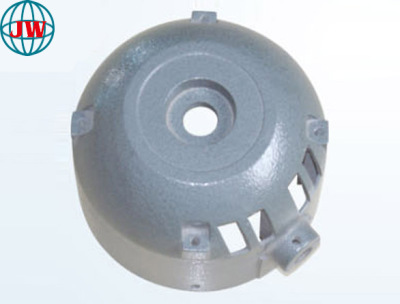
Die casting appearance standards Which are more important to the product?
2024-04-02 15:59
Title: Casting Excellence, The Light of Quality — Exploring the Importance of Die Casting Aesthetic Standards
Body: In the world of precision engineering, every detail is a pursuit of perfection. Die casting, as the heart of metal fabrication, has its aesthetic standards not merely as surface brilliance but as a reflection of profound quality. We are well aware that for products, "die casting appearance standards" serve as a silent business card, conveying the manufacturer's professional spirit and commitment to excellence.
In an era where details determine success or failure, we must ask ourselves, "How important are die casting aesthetic standards to a product?" More importantly, we should delve into how high-standard die casting processes can breathe life into our products. Every precise mold design, every flawless surface treatment, represents our relentless pursuit of perfection and our silent promise to our customers.
We recognize that a product's appearance is not only the creator of the first impression but also the guardian of functionality and durability. A finely polished die-cast part not only catches the eye but also demonstrates resilience and reliability under harsh conditions. Therefore, "die casting appearance standards" are not simply aesthetic demands; they are the baseline of quality, a symbol of trust.
At [Brand Name], we regard die casting aesthetic standards as the perfect fusion of art and engineering. Our products, from raw material selection to final inspection, undergo stringent control and scrutiny at every step. We believe that adherence to these standards is what creates products that exceed expectations and stand out in fierce market competition.
We invite you to witness the power of "die casting appearance standards," to experience [Brand Name]'s relentless pursuit of excellence. Choose us as a reliable partner in quality, and let's embark on a new chapter in die casting craftsmanship together, illuminating every future step with the light of quality.
Conclusion: At [Brand Name], we do more than just manufacture products; we cast trust and shape the future. "Die casting appearance standards" are our promise and your assurance. Join us in forging a legendary tale of excellence.
[Brand Name] — The Crafters of Quality, The Creators of Excellence.
[Note: Please replace [Brand Name] with your brand name.]
重新回答
|
Related News
More >-
![Aluminum Die-Casting Industry Thrives: Powering New Energy, Advanced Manufacturing, and Sustainable Production]()
Aluminum Die-Casting Industry Thrives: Powering New Energy, Advanced Manufacturing, and Sustainable Production
The aluminum die-casting industry is a manufacturing linchpin, valued at 42Bin2024andprojectedtohit 65B by 2030 (7.6% CAGR). NEVs drive demand most—aluminum’s lightness aids battery range, with Tesla’s Giga Press and firms like BYD using large-format aluminum die-casting for parts (e.g., battery housings). Alloys like AA6061 are key, and NEVs made up 52% of 2023’s demand. It also expands into renewables (solar brackets, wind casings) and advances via Vacuum Die-Casting and AI control. While aluminum price volatility and high machine costs challenge, NEV charging infrastructure and policy support offer opportunities.
-
![Aluminum Die-Cast Parts & Molds: Symbiotic Innovation Drives Automotive, Renewable, and Tech Sectors]()
Aluminum Die-Cast Parts & Molds: Symbiotic Innovation Drives Automotive, Renewable, and Tech Sectors
The aluminum die-casting industry, a manufacturing core, was valued at 42Bin2024andisprojectedtoreach 65B by 2030 (7.6% CAGR). NEVs are its top driver—aluminum’s lightness boosts battery range. Tesla’s Giga Press and BYD use large-format aluminum die-casting for parts like battery housings, with NEVs accounting for 52% of 2023’s demand (key alloy: AA6061). It also expands into renewables (solar brackets, wind casings) and advances via Vacuum Die-Casting and AI control. Challenges include aluminum price volatility and high machine costs, but NEV charging infrastructure and policy support bring opportunities.
-
![Aluminum Building Die-Castings: Reshaping Modern Construction with Strength and Sustainability]()
Aluminum Building Die-Castings: Reshaping Modern Construction with Strength and Sustainability
Aluminum building die-castings are transforming construction, merging strength, versatility, and sustainability. Lighter and more corrosion-resistant than steel or concrete, they enable durable, efficient components like curtain wall brackets and structural connectors. Die-casting with alloys such as 6061/A356 creates complex, precise parts (±0.03mm tolerance) with 290 MPa tensile strength, aiding modular builds. Using up to 80% recycled aluminum cuts energy use by 95%, aligning with green standards. The $7.3B 2023 market grows 6.9% yearly, driven by urbanization and modular trends. Innovations like smart sensors and 3D-printed molds will further their role in modern, eco-friendly architecture.
-
![Aluminum Alloy Die-Cast Connectors: The Unsung Heroes Shaping Modern Furniture Stability]()
Aluminum Alloy Die-Cast Connectors: The Unsung Heroes Shaping Modern Furniture Stability
Aluminum alloy die-cast connectors, vital for modern furniture, offer precision and durability via advanced die-casting and molds. These H13 steel-molded components, strong (280 MPa) and corrosion-resistant, outperform traditional connectors. With 3D-designed molds enabling complex geometries and sustainability via recyclable aluminum, they drive modular furniture growth, set to thrive in smart, eco-friendly designs.
-
![Die Casting Molds: The Unsung Heroes Shaping Modern Manufacturing]()
Die Casting Molds: The Unsung Heroes Shaping Modern Manufacturing
Die casting molds are vital in manufacturing, enabling high-volume production of precise, durable parts. Made from robust materials like H13 steel, they withstand extreme temperatures and pressure, producing 100,000–1M+ parts. CAD, 3D printing, and AI enhance their design and longevity. Used in automotive (EV components), electronics, and aerospace, they drive cost efficiency and innovation. Challenges include high upfront costs and supply issues, but advancements in monitoring and sustainability boost their role, making them key to modern production.
-
![Die Castings and Die Casting Molds: The Backbone of High-Precision Manufacturing]()
Die Castings and Die Casting Molds: The Backbone of High-Precision Manufacturing
Die castings and die casting molds are vital in manufacturing, forming durable, precise parts. Molds offer repeatability (100,000–1M cycles), design flexibility, and long-term cost efficiency. Die castings boast strength, lightness (aluminum 30% lighter than steel), dimensional accuracy (50% less machining vs. sand casting), and material efficiency. Used in automotive, electronics, and machinery, they face mold maintenance challenges but benefit from 3D-printed inserts, AI design, and sustainability trends, ensuring their key role in future production.
-
![Powder-Coated Die-Cast Parts: Merging Durability and Aesthetics in Modern Manufacturing]()
Powder-Coated Die-Cast Parts: Merging Durability and Aesthetics in Modern Manufacturing
Powder-coated die-cast parts combine die casting's strengths with powder coating's benefits. Die casting offers precision, cost efficiency, material versatility (aluminum, zinc, magnesium alloys), and structural integrity. Powder coating adds corrosion resistance, durability, and aesthetics. Used in automotive, electronics, furniture, and medical devices, they face challenges like porosity but benefit from innovations like vacuum casting and recyclable powders. With EV and tech growth, their role in merging strength and beauty will expand.
-
![How to ensure that the surface treatment of furniture components meets your requirements?]()
How to ensure that the surface treatment of furniture components meets your requirements?
To ensure furniture components' surface treatments meet requirements, we start by understanding aesthetic needs (color, texture), functional demands (corrosion/scratch resistance), and industry standards. Pre-treatment like cleaning and conversion coating ensures material compatibility. Advanced techs like powder coating, anodizing, and electroplating are applied based on needs. Rigorous QC includes in-process checks, post-treatment inspections (adhesion, thickness, defects), and performance tests (salt spray, abrasion). We offer customization and samples to align with unique project needs, ensuring both visual appeal and durability.
Get the latest price? We'll respond as soon as possible(within 12 hours)












